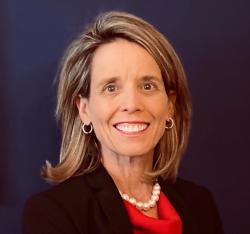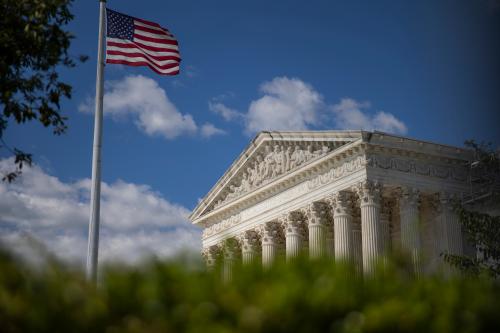With the recent passage of the bipartisan infrastructure bill in the Senate and the confirmation of eight federal judges–the most through Aug. 1 of a president’s first year going back to Richard Nixon—the Biden administration appears to be off to an auspicious beginning. However, in spite of these headlines, the pace of confirmations for leadership positions across the executive branch has been extremely slow. While staffing the government at the highest level is a key priority at the start of any administration, the paucity of confirmed officials at this point in time pales in comparison to President Biden’s three predecessors. There is no single reason that explains the slow pace of confirmations at this level, largely because two institutions—the presidency and the Senate—play pivotal roles and contribute to the delay. Apart from pace, it is also important to note that the Biden administration is setting records in terms of diversity. More women and nonwhites have been confirmed to these top executive positions in comparison to his three predecessors.
When I reported on progress at the 100-day mark, President Biden had racked up 30 confirmations, but his pace lagged behind Presidents Bush and Obama. In addition, the administration demonstrated an undeniable commitment to diversity during the first 100 days. This report marks a second opportunity to track the progress, the second 100 days of the Biden administration (from May 1 through Aug. 9, 2021). Note that the data are drawn from Congress.gov and include comparative information going back to President George W. Bush while focusing only on confirmations to the 15 major executive departments (excluding U.S. attorneys at the Department of Justice). In order to track diversity (gender and race/ethnicity), I adopted the U.S. Census race/ethnicity categorization and consulted a variety of online resources for verification. Set out below are the findings from this analysis.
Pace of confirmations
The chart below tracks the frequency of Senate-confirmed appointees at the 100-, 200-, and 300-day marks within the first year of a presidency. After 200 days, W. Bush had accumulated a total of 240 confirmations, Obama had 238, and Trump had 89; Biden stands at 88. It’s clear that the Biden administration is behind on confirming appointees, especially compared to the W. Bush and Obama presidencies.
Stepping back from the cumulative totals in which Biden lags, the data from the second 100-day time period reveal that the pace has slowed even more. Within days 101-200 of their presidencies, George W. Bush added 208 confirmations, Obama added 175, Trump added 70, and Biden added just 58. During the period in which there is typically a major uptick in confirmations, the Biden confirmation rate increased by only 28 confirmations compared to the first 100 days (where he had 30 confirmations), a 93% improvement. Compare that to his three predecessors:
- President George W. Bush had an uptick of 176 confirmations in days 101-200, a whopping 550% increase compared to his first 100 days.
- Obama saw an increase of 112 confirmations, a 178% uptick.
- Trump added 70, a 268% boost.
No matter how you slice the data—looking cumulatively or just looking at the second 100-day period—the pace of confirmations is unusually slow.
Diversity of confirmations
Shifting the focus to the gender and race/ethnicity of those confirmed, the Biden administration has demonstrated a strong and steady commitment to appointing women and nonwhites to the highest positions in government. In the second 100-day period, more women than men were confirmed, with women representing 62% of confirmed individuals.
Looking at the rate of women in Senate-confirmed positions over the course of the first 300 days shows once again the Biden administration’s commitment to placing women in key positions. In fact, the Biden administration has already appointed more women to Senate-confirmed positions in the executive branch than President Trump had after a full 300 days in office.
When examining race/ethnicity, nonwhites represented 47% of the confirmed individuals from days 101-200, a trend that far outpaces his predecessors going back to George W. Bush. The commitment to the appointment of women and nonwhites is at an all-time high and reflects the fulfillment of a key campaign promise.
Why the slow pace?
Though the Biden administration is bringing much-needed diversity to senior leadership, the pace of confirmation is not entirely in their hands. The Senate plays a key role in moving nominees through the process to a floor vote, but the snail’s pace is clearly not due to a lack of nominees. According to research conducted by the Partnership for Public Service, President Biden had nominated a total of 238 individuals to the 15 major departments (as of Aug. 4, 2021). Of those 238 nominations, only 88 (or 37%) have been confirmed. Put differently, just over one-third of the existing nominees to the 15 major departments have made their way through the confirmation gauntlet. Now 200 days into a new administration, such a small number of confirmed appointees is a historic low.
Admittedly, the Senate has had a full agenda since Jan. 20th with impeachment proceedings, the passage of a COVID-19 relief package, a budget resolution to set up reconciliation, and the infrastructure bill, to name some highlights. In addition, a dash of Republican obstruction has likely hindered the pace of confirmations: In early July, Sen. Ted Cruz (R-Texas) placed a hold over all State Department nominees due to a disagreement with the Biden administration over a Russian pipeline. After 200 days in office, only 10 Biden nominees have been confirmed to the State Department. Compare this showing to 78 for President W. Bush, 85 for President Obama, and 23 for President Trump. Senate holds are not unusual and both parties are guilty of holding up nominees, but a halt of this magnitude to State Department appointees, particularly ambassadors, is likely affecting diplomatic relations across the world.
It may also be the case that the White House push for judicial appointments—which have a lifetime term—has taken priority over other executive branch nominees. Sen. Chuck Schumer (D-N.Y.) is performing the ultimate balancing act of determining which nominations to prioritize while maintaining a vigorous legislative agenda. No doubt the White House is likely consulting with the Senate majority leader, but the chamber’s priorities appear to be weighing heavily in favor of judicial appointments and legislative victories. In addition, the 50-50 split in the Senate may be influencing efforts to have committees report nominees rather than engaging in the several steps to discharge a nominee when there is a tie in committee, resulting in a lengthier process.
It is also worth noting that the Biden transition made a deliberate effort to fill the political positions across the government that did not require Senate confirmation. Presidential transition scholar Martha Joynt Kumar contends, “Instead of focusing on Cabinet secretaries, Kaufman [Head of Biden Transition, 2020] advocated prioritizing the political appointments that did not need to go through the Senate.” This strategy, implemented well before Election Day, demonstrates how an experienced transition team can anticipate and work around future roadblocks. So, while there are sparse numbers of confirmed leaders, there are several Biden political appointees working in key positions across the federal government.
Perhaps the next 100 days will prove more productive in the realm of Senate confirmations to the executive branch, but historically this has not been the case. Given the personnel upheaval that characterized the Trump administration, filling the leadership vacuum should be priority number one. Federal departments with thousands of employees and millions of dollars in their budget need leadership, and the Senate should prioritize the confirmation process at this important moment in American history.





Commentary
Biden’s confirmations progress at the 200-day mark
Ever so slow, but with a bold commitment to diversity
August 13, 2021